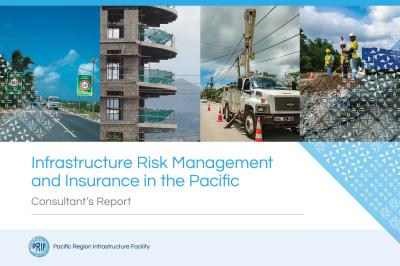There are significant challenges with accessing commercially viable insurance for contractors delivering infrastructure projects across the Pacific and the situation has been worsening over recent years. This is because the vulnerability of many of the countries, particularly with respect to climate change and natural catastrophe exposures, but also because of remoteness, challenges in sourcing quality materials, long delays in project completion, and regulatory issues. The challenge is greater for smaller countries and smaller projects, where contractors struggle to secure insurance coverage, particularly disaster risk insurance. PRIF partners have recognized the need and urgency to address these infrastructure project insurance issues in the Pacific. The availability of construction insurance is a key issue for the implementation of infrastructure projects to support the post-coronavirus disease (COVID-19) recovery process.
In response to these concerns, PRIF commissioned a study in 2022 to explore issues around infrastructure insurance provision in the Pacific and make recommendations to improve the cost-effective management of infrastructure project lifecycle risks in the Pacific. The report found that as of 2021, the PRIF partner pipeline for the Pacific indicates approximately $1.5 billion worth of infrastructure projects in various sectors in several Pacific countries across several years. If treated collectively as a portfolio, insurance companies may be encouraged to provide more affordably priced insurance coverage and provide opportunities for enhanced regional risk pooling.
The report calls for a new and transformative model to support localization and help drive the national/local construction capability mandate. A key recommendation is for PRIF partners to form an insurance pooling facility whose use is mandated for all PRIF and related party construction projects, large and small, in all Pacific Island countries, including Papua New Guinea. Creating a single facility pool with a large, guaranteed, project pipeline will be attractive to local, regional, and international contractors, insurers and other relevant market participants, and ensure international best practice risk reduction.

